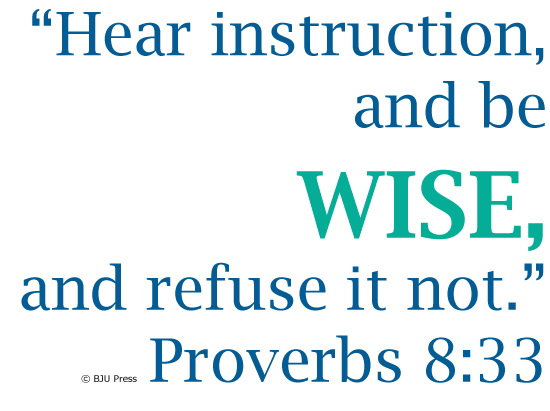
How do Bible study skills relate to biblical worldview shaping? First, you must understand that a biblical worldview consists of three ingredients:
(1) the larger story of the world,
(2) the beliefs and values that grow out of that larger story, and
(3) the cultural action or personal behavior that should result from those beliefs and values.
Second, once the purposeful aim for a series of Bible courses has been established, there needs to be a practical method in place for accomplishing that aim of worldview shaping. It’s important to teach children and teens a good process for studying the Bible to ensure that their beliefs and values (ingredient 2) truly grow out of the larger biblical story of the world (ingredient 1) and thus lead to appropriate cultural participation and personal behavior (ingredient 3).
Here’s a simple inductive Bible study method that you can teach your children:
- Observe (what the Bible passage says)
- Interpret (what the Bible passage means)
- Apply (how the Bible passage should become meaningful)
The method can be tailored to multiple age-appropriate learning levels. Each step in the process can be more or less detailed as appropriate.
Example of an Inductive Study
You can use what God said to His people through Isaiah to teach your children a particular value—repentance. But that value will only make sense to your children when they accept the big story of Scripture (Creation, Fall, Redemption) regarding the reality of their condition before God. Only then will that value be personally adopted.

Example of how the inductive method can make this passage understandable and practical in terms of a biblical worldview:
- Observe (identify the belief/value): This step involves asking your children (at different age-appropriate levels) to mark or point out the word pictures and phrases that describe or show repentance.
- Interpret (understand and give significance to the belief/value based on the reality of the big story): This step involves asking your children to explain the word pictures that describe genuine repentance. Why is genuine repentance important to God?
- Apply (put the belief/value into practice): This step involves asking your children how the teachings on repentance relate to their own lives. Are there any parallels in their own lives that compare to the examples described in the passage?
Why the Order of the Inductive Method Is Important
Observing what God’s Word says and interpreting what it means must precede the application of its morals to life. If the process is reversed (beginning with application, skipping careful observation and interpretation), then Scripture gets twisted to fit into a preconceived human system of morals. Or the real significance—of relating properly to God in accordance with the larger reality of the world—gets lost.


